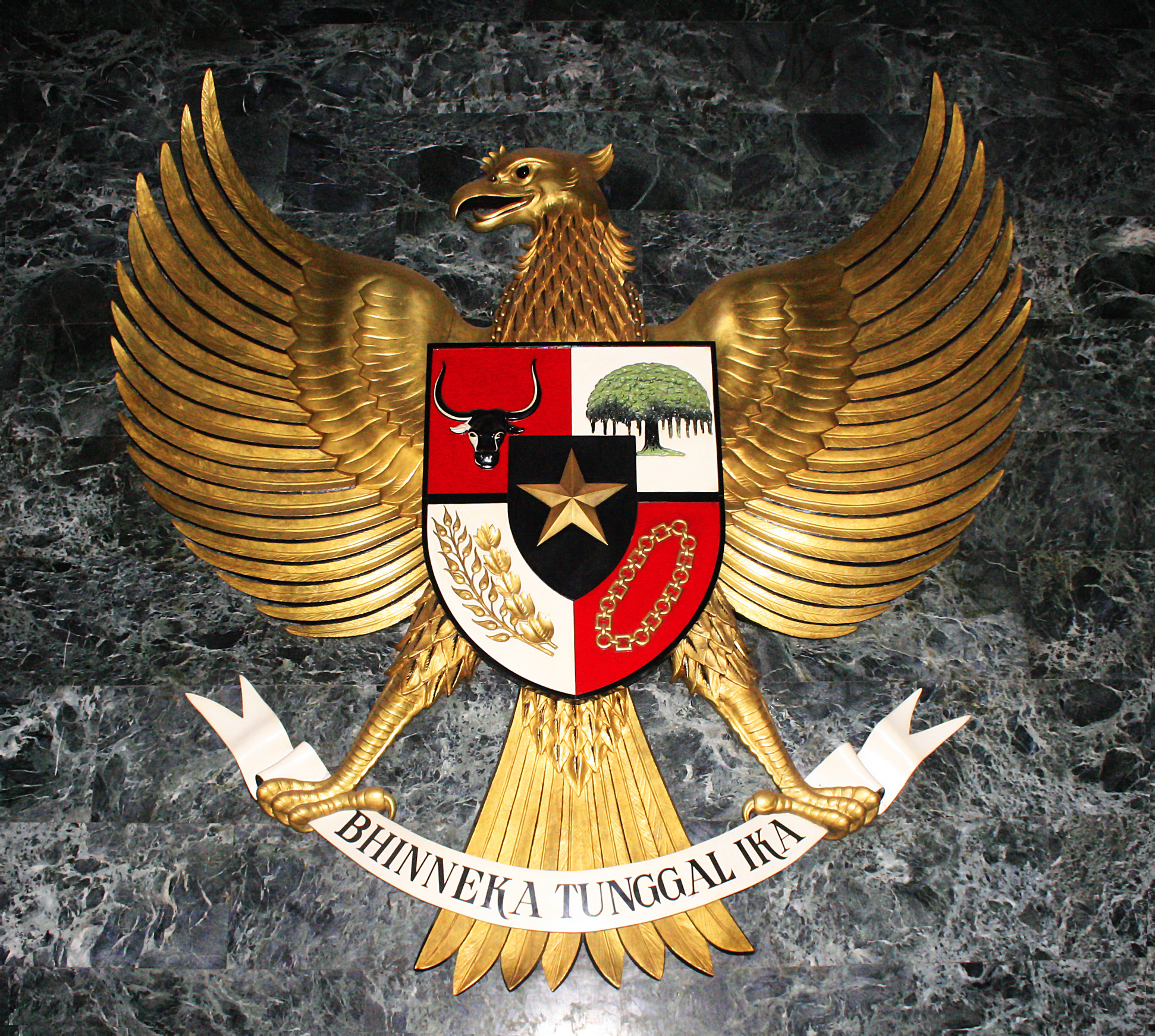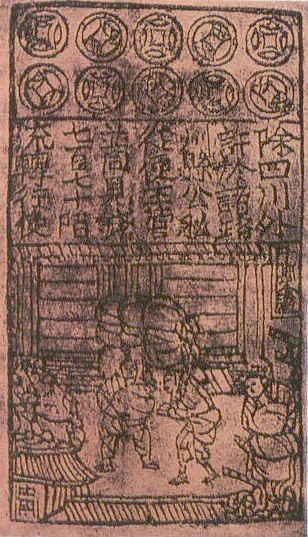|
500 Rupiah Coin
The Indonesian five hundred rupiah coin (Rp500) is a denomination of the Indonesian rupiah. It was introduced in 1991 and has since been revised three times in 1997, 2003, and 2016. It currently has the second-highest value of all circulating rupiah coins after the Rp1,000 coin. As of December 2023, only aluminium 500 rupiah coins, dated 2003 and 2016, are legal tender. First issue (1991-1992) The Rp500 coin was first introduced in 1991 as an aluminum-bronze coin. It weighed , had a diameter, was thick, and had a reeded edge. It had two parts: a reeded outer part that curves around the coin eight times, and an inner part that contains its obverse and reverse images. The obverse featured the national emblem Garuda Pancasila, the lettering "BANK INDONESIA," and the mint year, while the reverse depicted an image of the jasmine flower (''Jasminum''), the lettering "Bunga Melati" and the denomination ("Rp500"). 71 million of these coins were minted in 1991, while 100 million of th ... [...More Info...] [...Related Items...] OR: [Wikipedia] [Google] [Baidu] |
Bank Of Indonesia
Bank Indonesia (BI) is the central bank of the Republic of Indonesia. It replaced in 1953 the Bank of Java (, DJB), which had been created in 1828 to serve the financial needs of the Dutch East Indies. History Bank of Java King William I of the Netherlands granted the right to create a private bank in the Indies in 1826, which was named . It was founded on 24 January 1828 and later became the bank of issue of the Dutch East Indies. The bank regulated and issued the Netherlands Indies gulden. In 1881, an office of the Bank of Java was opened in Amsterdam. Later followed the opening of an office in New York. By 1930 the bank owned sixteen office branches in the Dutch East Indies: Bandung, Cirebon, Semarang, Yogyakarta, Surakarta, Surabaya, Malang, Kediri, Banda Aceh, Medan, Padang, Palembang, Banjarmasin, Pontianak, Makassar, and Manado. The Bank of Java was operated as a private bank and individuals as well as industries etc. could get help in the bank's offices. File: ... [...More Info...] [...Related Items...] OR: [Wikipedia] [Google] [Baidu] |
Indonesian Rupiah
The rupiah (Currency symbol, symbol: Rp; ISO 4217, currency code: IDR) is the official currency of Indonesia, issued and controlled by Bank Indonesia. Its name is derived from the Sanskrit word for silver, (). Sometimes, Indonesians also informally use the word ( in Indonesian language, Indonesian) in referring to rupiah in coins. The rupiah is divided into 100 Cent (currency), cents (), although high inflation has rendered all coins and banknotes denominated in cents obsolete. The rupiah was introduced in 1946 by Indonesian nationalists Indonesian National Revolution, fighting for independence. It replaced the Japanese government-issued currency in the Dutch East Indies, Japanese-issued version of the Netherlands Indies gulden which had been introduced during the Japanese occupation of the Dutch East Indies, Japanese occupation in World War II. In its early years, the rupiah was used in conjunction with other currencies, including a new version of the gulden introduced by the ... [...More Info...] [...Related Items...] OR: [Wikipedia] [Google] [Baidu] |
Indonesian 1,000-rupiah Coin
The Indonesian one thousand rupiah coin (Rp1,000) is a coin of the Indonesian rupiah. It circulates alongside the 1,000-rupiah banknote. First introduced on 8 March 1993 as bimetallic coins, they are now minted as unimetallic coins, with the first of its kind appearing in 2010 and its latest revision being in 2016. As of 2024, the last two series in this denomination are legal tender. First issue (1993-1997, 2000) This is the first issue of the 1,000-rupiah coin. Being bimetallic, it has a cupronickel outer edge and an inner circle made out of aluminum-nickel-bronze alloy. It weighs , has a diameter, is thick, and has a jagged edge. The coin's obverse features the national emblem Garuda Pancasila with the year of issue in its aluminum-nickel-bronze inner circle and the lettering "BANK INDONESIA" on its cupronickel outer ring, while its reverse features an oil palm in the inner circle with the lettering "KELAPA SAWIT" (oil palm) as well as "Rp1000" on the outer ring. These coi ... [...More Info...] [...Related Items...] OR: [Wikipedia] [Google] [Baidu] |
Garuda Pancasila
The national emblem of Indonesia is called in Indonesian. The main part is the Garuda with a Escutcheon (heraldry), heraldic shield on its chest and a scroll gripped by its legs. The shield's five emblems represent ''Pancasila (politics), Pancasila'', the five principles of Indonesia's national ideology. The Garuda claws gripping a white ribbon scroll inscribed with the national motto ''Bhinneka Tunggal Ika'' written in black text, which can be loosely translated as "Unity in Diversity". ''Garuda Pancasila'' was designed by Sultan Hamid II from Pontianak, Indonesia, Pontianak, supervised by Sukarno, and was adopted as the national emblem on 11 February 1950. History Garuda, the discipled carrier or vehicle (vahana) of the Hindu god Vishnu, appears in many ancient Hinduism, Hindu-Buddhism, Buddhist temples of ancient Indonesia. Temples such as Mendut, Borobudur, Sajiwan, Prambanan, Kidal Temple, Kidal, Candi Penataran, Penataran, Belahan, and Candi Sukuh, Sukuh depict the im ... [...More Info...] [...Related Items...] OR: [Wikipedia] [Google] [Baidu] |
Jasminum
Jasmine (botanical name: ''Jasminum'', pronounced ) is a genus of shrubs and vines in the olive family of Oleaceae. It contains around 200 species native to tropical and warm temperate regions of Eurasia, Africa, and Oceania. Jasmines are widely cultivated for the characteristic fragrance of their flowers. The village of Shubra Beloula in Egypt grows most of the jasmine used by the global perfume industry. Description Jasmine can be either deciduous or evergreen, and can be erect, spreading, or climbing shrubs and vines. The leaves are borne in opposing or alternating arrangement and can be of simple, trifoliate, or pinnate formation. The flowers are typically around in diameter. They are white or yellow, although in rare instances they can be slightly reddish. The flowers are borne in cymose clusters with a minimum of three flowers, though they can also be solitary on the ends of branchlets. Each flower has about four to nine petals, two locules, and one to four ovule ... [...More Info...] [...Related Items...] OR: [Wikipedia] [Google] [Baidu] |
Proclamation Of Indonesian Independence
The Proclamation of Indonesian Independence (, or simply ''Proklamasi'') was read at 10:00 Tokyo Standard Time on Friday 17 August 1945 in Jakarta. The declaration marked the start of the diplomatic and armed resistance of the Indonesian National Revolution, fighting against the forces of the Netherlands and pro-Dutch civilians, until the latter officially acknowledged Indonesia's independence in 1949. The document was signed by Sukarno and Mohammad Hatta, who were appointed president and vice-president respectively the following day. The date of the Proclamation of Indonesian Independence was made a public holiday by a government decree issued on 18 June 1946. Background The beginnings of the independence movement In 1918, the Dutch authorities in the Dutch East Indies established a partly-elected People's Council, the '' Volksraad'', which for the first time gave Indonesian nationalists a voice. Meanwhile, Indonesian students studying in the Netherlands formed the Perhimpo ... [...More Info...] [...Related Items...] OR: [Wikipedia] [Google] [Baidu] |
Wayang
( , ) is a traditional form of puppet theatre play originating from the Indonesian island of Java. The term refers both to the show as a whole and the puppet in particular. Performances of wayang puppet theatre are accompanied by a ''gamelan'' orchestra in Java, and by '' gender wayang'' in Bali. The dramatic stories depict mythologies, such as episodes from the Hindu epics the ''Ramayana'' and the ''Mahabharata'', as well as local adaptations of cultural legends. Traditionally, a is played out in a ritualized midnight-to-dawn show by a , an artist and spiritual leader; people watch the show from both sides of the screen. performances are still very popular among Indonesians, especially in the islands of Java and Bali. performances are usually held at certain rituals, certain ceremonies, certain events, and even tourist attractions. In ritual contexts, puppet shows are used for prayer rituals (held in temples in Bali), ritual (cleansing children from bad luck), and ri ... [...More Info...] [...Related Items...] OR: [Wikipedia] [Google] [Baidu] |
Coins Of The Rupiah
The first coins of the Indonesian rupiah were issued in 1951 and 1952, a year or so later than the first Indonesian rupiah banknotes printed, following the peace treaty with the Netherlands in November 1949. Although revolutionary currency had been issued by the provisional Indonesian government between 1945 and 1949, it had all been formed of paper, for metal were too scarce for the internationally isolated government to use as currency. Due to high inflation in the late 1950s and early 1960s, no coins were minted after 1961, and that which remained in circulation were effectively worthless. A devalued 'new rupiah' was issued in an attempt to tame inflation in 1965, with banknotes in denominations all the way from Rp0.01 (1 cent) up to Rp100 - no coins were struck at this time. By 1971, however, the economy, and inflation, under Suharto's New Order was stable, and coinage was once again issued, in denominations of Rp1, Rp5, Rp10, Rp25 and Rp50, with Rp100 coins added two ye ... [...More Info...] [...Related Items...] OR: [Wikipedia] [Google] [Baidu] |
Currencies Of Indonesia
A currency is a standardization of money in any form, in use or circulation as a medium of exchange, for example banknotes and coins. A more general definition is that a currency is a ''system of money'' in common use within a specific environment over time, especially for people in a nation state. Under this definition, the British Pound sterling (£), euros (€), Japanese yen (¥), and U.S. dollars (US$) are examples of (government-issued) fiat currencies. Currencies may act as stores of value and be traded between nations in foreign exchange markets, which determine the relative values of the different currencies. Currencies in this sense are either chosen by users or decreed by governments, and each type has limited boundaries of acceptance; i.e., legal tender laws may require a particular unit of account for payments to government agencies. Other definitions of the term ''currency'' appear in the respective synonymous articles: banknote, coin, and money. This article use ... [...More Info...] [...Related Items...] OR: [Wikipedia] [Google] [Baidu] |






